String Utilities
This page explains how to set up string operators, for kdb Insights Enterprise pipelines, using the Web Interface.
String utility operators allows for both streaming and batch data to be operated on in kdb Insights Enterprise.
See APIs for more details
A q interface can be used to build pipelines programmatically. See the q API for API details.
A Python interface is included along side the q interface and can be used if PyKX is enabled. See the Python API for API details.
The pipeline builder uses a drag-and-drop interface to link together operations within a pipeline. For details on how to wire together a transformation, see the building a pipeline guide.
To Uppercase
This operator receives data from a field and converts string data to uppercase.
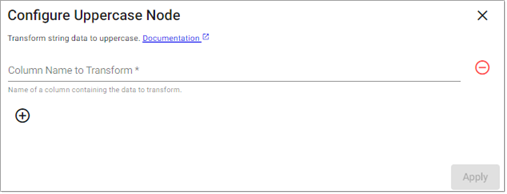
See APIs for more details
q API: .qsp.string.toUppercase •
Python API: kxi.sp.string.to_uppercase
Required Parameters:
| name | description | default |
|---|---|---|
| fields | A list of column names or indices indicating the columns to act on. |
Example: Publishing from a read expression operator
A read expression operator is a operator in which data can be manually placed in the form of a Python or q expression. In this example, we will apply an uppercase transform for an incoming q table's y column.
-
Drag an expression reader and enter a q table with a column
yyou would like to perform the string transformation on.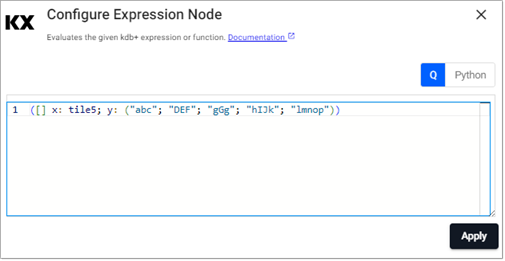
-
Drag a string operator
toUppercaseand set the column name to bey.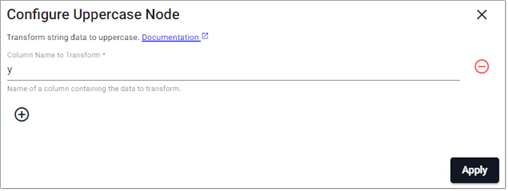
-
Setup some writer to write the newly transformed data. In this example, we use a console writer.
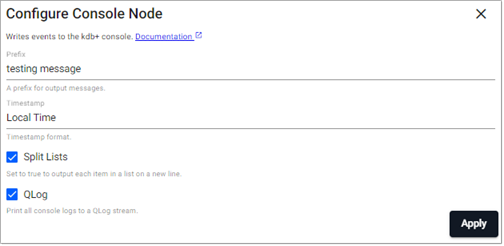
To Lowercase
This operator receives data from a field and converts string data to lowercase.
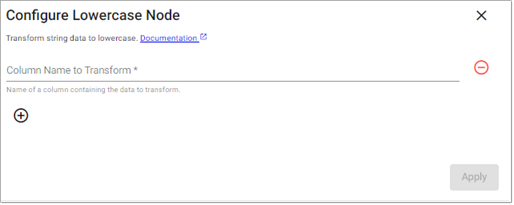
See APIs for more details
q API: .qsp.string.toLowercase •
Python API: kxi.sp.string.to_lowercase
Required Parameters:
| name | description | default |
|---|---|---|
| fields | A list of column names or indices indicating the columns to act on. |
Example: Publishing from a read expression operator
A read expression operator is a operator in which data can be manually placed in the form of a Python or q expression. In this example, we will apply an lowercase transform for an incoming q table's y column.
-
Drag an expression reader and enter a q table with a column
yyou would like to perform the string transformation on.
-
Drag a string operator
toLowercaseand set the column name to bey.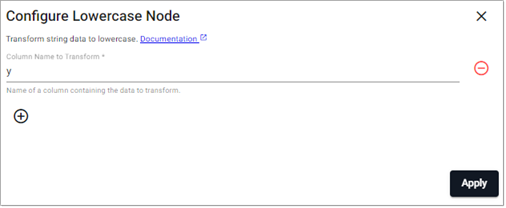
-
Setup some writer to write the newly transformed data. In this example, we will use a console writer.
